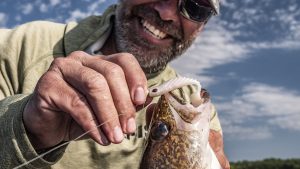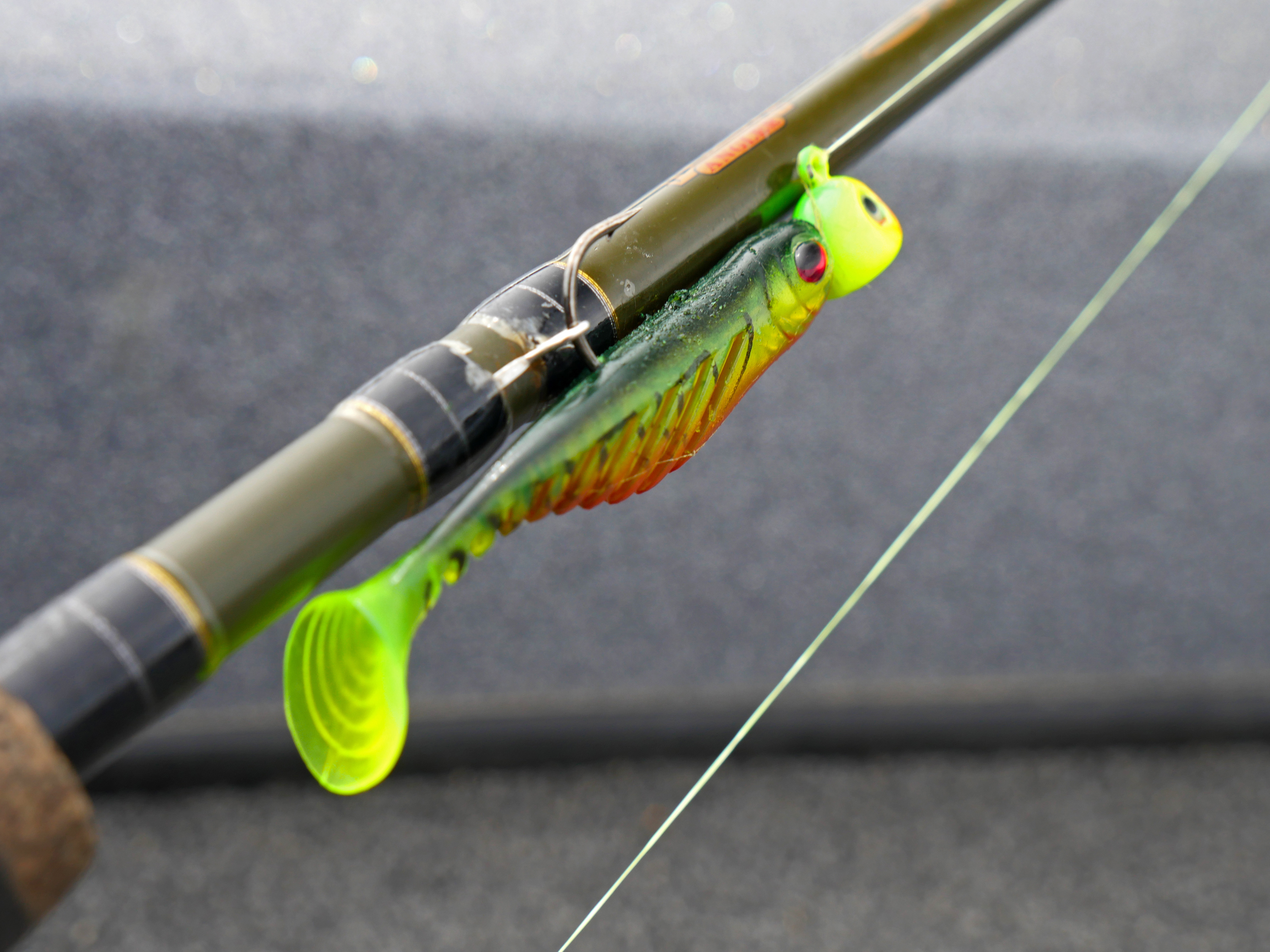
The more you know about the fish, the more detailed your angling can become.
Cold blooded walleyes feed once a day in winter, twice a day in spring, and three times a day in warmer summer waters. Walleyes that move a few inches in winter, a foot in spring, will travel and chase baits much further in the summer. Similarly, everything in the water is moving faster so your presentation needs to pick up the pace to keep up with reality.
Secondly, cold water forces walleyes to a narrow band of comfortable water. For security, walleyes stay on the bottom at this depth and feed on whatever is available. Only occasionally will they venture out of this comfort zone for a full meal. Oppositely, warm water allows the walleyes to move up and down the water column and to chase bait anywhere from shallow water to suspended locations over deeper water. The formation of a thermocline is the only phenomenon limiting walleye movement.
Here are five tips to stick with wide spread walleyes:
– While driving from spot to spot kook for suspended fish. Fish are no longer pinned to the bottom and start to roam off structure. Use the Precision Trolling App to confidently present crankbaits or spinners to these fish.
– Check deeper and shallower with sonar. Structure fish can follow bait deeper or move up into shallow weeds. Use 2D sonar over deeper drop-offs and Lowrance Live to find weed edges and shallow rockpiles with fish.
– Use heavier jig heads with plastics. Heavier jigs (1/4 to 3/8 ounce or more) can be worked faster while also making sure the paddle tails on Berkley Powerbait Ripple Shads or Power Swimmers keep kicking. More active fish will start responding to Moonshine Shiver Minnows’ darting action.
– Speed up. Run Slow Death Rigs at 1.2 to 1.5 mph. Run crankbaits 2.0+ mph. Speed up a notch with each fish and do not be surprised if fish still hit at 2.8 mph or above.
– Stay with Slow Death. Some structure is too small to troll and using a Berkley Fusion19 Slow-Turn hook with a Gulp! Killer Crawler is a great way to explore drop-offs, reefs, and flats. Experts and beginners alike (including kids) can feel the bottom, detect the bite, and set the hook.
Warmer water expands the lake for fish to hunt and anglers need to adjust. Fortunately, increased metabolism means the fish feed all day and chase faster lures. Speeding up and spreading out are key ways to find The Next Bite.










